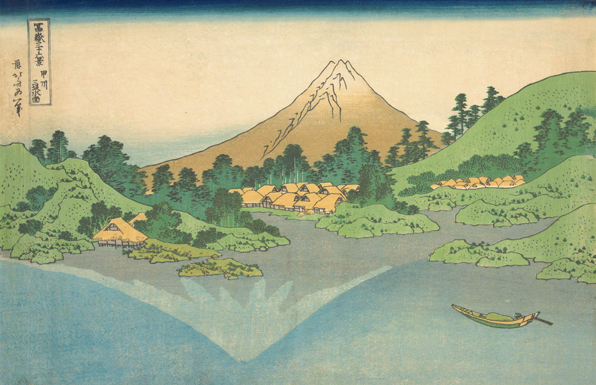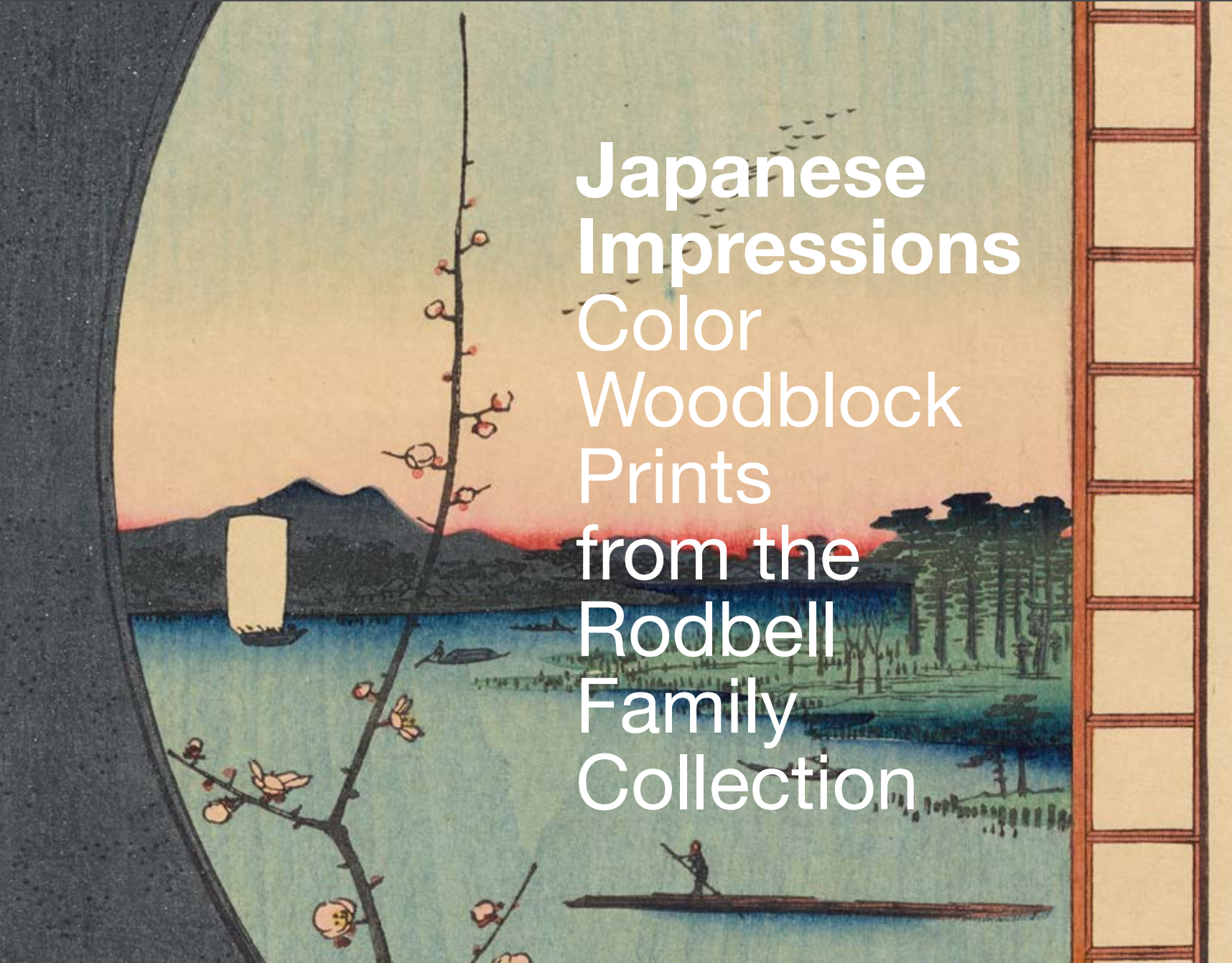
DECEMBER 10, 2016–APRIL 2, 2017
KATSUSHIKA HOKUSAI
Katsushika Hokusai (Japanese, 1760-1849)
The Surface of the Lake at Misaka in Kai Province, from Thirty-Six Views of Mount Fuji, c. 1830-31
Color woodblock print
Private Collection
The ukiyo-e print movement is perhaps best known through the work of Katsushika Hokusai, whose Great Wave off Kanagawa (c. 1830–31) has become an icon of modern art. The artist populated his prints with an encyclopedic range of subject matter, from flowers and erotica to architecture and children’s games. But Hokusai’s woodblock prints depicting popular Japanese landscape views were especially influential. These landscapes were not only extremely sought after by collectors, but also inspired generations of artists both in Japan and around the world. It has been argued that Hokusai was the first globally recognized Japanese artist.
In a ukiyo-e woodblock print, each color is usually made on a different block of wood; some of the works in this exhibition used more than twenty carved blocks to create an image. At times two or three colors were printed from different parts of a single block; wood was at a premium, so no space was wasted. Given this rich tapestry of colors, the Japanese referred to such prints as nishiki-e or “brocade pictures.” The characteristic preponderance of blues in many of Hokusai’s works resulted from a new development in printing inks: Prussian blue (a rich, vivid hue) was imported into Japan and made available to artists at a reasonable cost for the first time in the 1820s.


